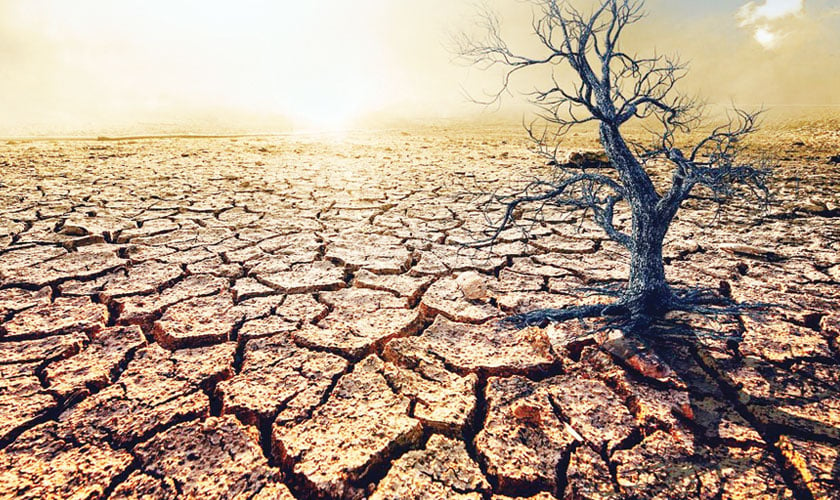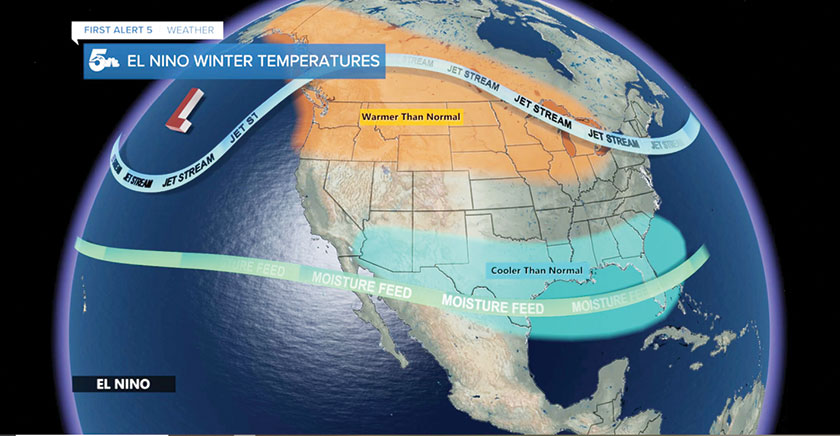PLANET TALK
Hold tight, the inhabitants of planet Earth! El Niño is on its way. Scientists have been worrying about the rising ocean temperatures over the past four years, but there have been new findings lately. In mid-March, climatologists noted that global sea surface temperature climbed to a new high. And this trend is worrying experts as it indicates what could lie ahead for us in the future. Just like the cooling La Niña phenomenon had a firm grip on the Pacific, forecasts predict El Niño is on its way starting this summer – and along with it, impacts like extreme heat, dangerous tropical cyclones and a significant threat to fragile coral reefs.
La Niña and El Niño are natural phenomena in the tropical Pacific Ocean; La Niña is marked by cooler-than-average ocean temperatures, while El Niño brings warmer-than-average temperatures. Both have major influence on the weather across the globe. And a switch to El Niño will almost assuredly bring warmer global temperatures along with it.
It’s unclear how strong the coming El Niño will be – some models predict it could reach super-strength, others suggest it will be more moderate. But what is clear is that, layered on top of human-caused global heating, the signs point to El Niño ushering in severe and unprecedented impacts for many parts of the world.
Here are six weather and climate extremes to look out for.
The world will get 1.5 degrees warmer for the first time
El Niño could – for the first time – push the world past 1.5 degrees Celsius of warming above the pre-industrial levels of the mid-to-late 1800s.
Countries pledged in the Paris Climate Agreement to limit global warming to well below 2 degrees – and preferably to 1.5 degrees – compared to pre-industrial temperatures. Scientists consider 1.5 degrees of warming as a key tipping point, beyond which the chances of extreme flooding, drought, wildfires, and food shortages could increase dramatically.
We will probably have, in 2024, the warmest year globally on record. The hottest year on record is currently 2016, which followed a very strong El Niño.
The world has already seen around 1.2 degrees of warming, as humans continue to burn fossil fuels and produce planet-heating pollution. And despite three years of cooling La Niña, temperatures have soared to dangerous levels.
Europe saw its hottest summer in 2022, with temperatures over 40 degrees Celsius (104 Fahrenheit) and Pakistan and India experienced a searing heatwave, where parts of the country reached more than 49 degrees Celsius (120 Fahrenheit).
Whatever the exact level of heating El Niño brings, some of its impacts – including extreme temperatures – are very likely to be unprecedented
More droughts and heatwaves
California (USA) has seen an onslaught of rain and snow in recent months. That could intensify during El Niño.
Once El Niño kicks in, much of California will likely see an elevated chance of above-normal rainfall with an increased risk of flooding, landslides and coastal erosion
In other parts of the world, El Niño could amplify droughts, fierce heatwaves and dangerous wildfires.
South Africa and India are at risk of drought and extreme heat, as are nations near the West Pacific including Indonesia, Australia and Pacific Island nations such as Vanuatu and Fiji.
For Australia – still reeling from extensive flooding – El Niño is likely to bring much drier, hotter weather, especially in the eastern areas of the country. Since 1900, 18 of the 27 El Niño years have meant widespread winter and spring drought.
Its recent floods have also increased fears for a particularly destructive bushfire season, as increased vegetation growth could provide fuel for fires as the weather gets drier and hotter.
India, too, is bracing itself for the impacts of El Niño, which can weaken the monsoon that brings the rainfall it relies on for filling aquifers and growing crops. El Niño could also push up temperatures in India, which is already experiencing unusually early heatwaves.
Tropical cyclones can often form further west in the basin and remain stronger longer and so potential impacts to Hawaii are increased. According to Gottschalck, this means “more chances of landfall and remotely driven impacts, such as stronger and longer duration seas, heavy rainfall, and more”.
Catastrophic bleaching of coral reefs
El Niño is an ocean heater, and warmer water is bad news for coral reefs. When they get too hot, corals will spit out the algae living within their tissue, which provides them with both their colour and most of their energy. This causes corals to turn white – in a phenomenon called bleaching. While they can recover if temperatures eventually cool, bleaching puts them at higher risk of starvation and death.
A particularly catastrophic period of coral bleaching happened between 2014 and 2017 – hitting every major reef on earth. Australia’s Great Barrier Reef saw nearly 30 per cent of its corals die in a record-breaking marine heatwave in 2016 – which followed a very strong El Niño that started in 2015.
More mass bleaching events have followed, and with El Niño on the horizon, scientists are increasingly concerned about the impacts on coral that has simply not had enough time to recover.
More ice melting in the Antarctic
Antarctic ice is already in trouble and El Niño could make it worse. Earlier this year, ice levels on the continent dipped to record-breaking lows for the second time in two years, sparking fear that after years of ups and downs, it could now be on a steep downward trend.
El Niño could help speed up this process, according to recent research, which found a link between the strength and frequency of El Niño events and the speed of Antarctic ice melt.
https://www.thenews.com.pk/magazine/us/1071201-get-ready-for-el-nio



